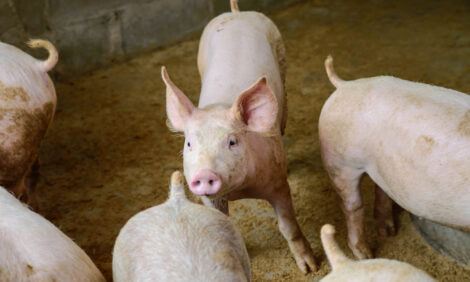



Practical Training Held on Wild Boar Management
BULGARIA - The European Commission for the Control of Foot-and-Mouth disease (EuFMD) recently implemented a practical training workshop in Bulgaria on the management of outbreaks in which wildlife is involved.The team trainers were Drs Masiulis, Skrypnyk, Zdravkova, Dr Dietze, from the Friedrich Loeffler Institute (FLI), Germany, and Dr Alexandrov, from the Bulgarian Food Safety Agency.
The objectives of this practical workshop were decided in collaboration with the countries involved and included:
- Contingency planning for Foot-and-Mouth Disease and measures in case of confirmation in wild animals;
- Wildlife health and management;
- Development of strategy and building capacity to address animal health issues at the wildlife livestock-human interface in Eastern and Central Europe, and the role of wild boar in FMD disease epidemiology at the wildlife interface with domestic livestock and presentation of studies under epidemic and endemic conditions;
- Wild boar ecology and disease - space use and social interactions in a wild boar population on a year round basis;
- Non-invasive sampling of wild boar for FMD;
- Non-invasive sampling of wild boar for other animal contagious diseases and the practical example of African Swine Fever (ASF) in Baltic countries;
- Non-invasive collection of saliva from wild ungulates for disease surveillance; the EU approach on surveillance/monitoring, control and eradication of Classical Swine Fever (CSF) in wild boar;
- Differential diagnosis of African Swine Fever, the role of wild boar for the epidemics in EU and the control strategies applied;
- Trapping as an alternative method to eradicate FMD/CSF/ASF in wild boar.
The training workshop was both practical and theoretical. The latter part was designed to introduce the role of EuFMD in FMD control and eradication and to introduce a part of Contingency plan for FMD - measures to be done in case of confirmation in wild animals. The practical part involved using the samples designed for non-invasive sampling, distribution of baits at salt licks and feeding locations of wild boars following observation of wild animals.
Biosafety and biosecurity measures were implemented during the game processing, as well as clinical examination and sampling of wild boar for contagious animal diseases. One of the goals of the training was to implement the Active, Non-Invasive Management of Outbreaks (ANIMO) principle.
The trainers found that group work led to development of the common strategies to be used for wildlife surveillance and animal disease control in the wild life. Discussion of the developed wildlife strategies resulted in recognition of the need for better wildlife practice manuals and better communication with hunter associations.
In conclusion, Dr Masiulis mentioned that wildlife management and surveillance strategy should be further developed with a specific part in the Contingency plan. He added, in concurrence with Dr Alexandrov that, although the wildlife hunting and management practices in the Balkan countries, different common strategies for the control of animal contagious diseases in wildlife are needed in the region.








